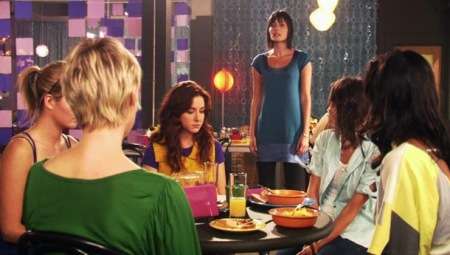
When a college-aged Anne-Marie Williams came out, TV shows like “Will & Grace” were years in the future. Internet search engines didn’t generate a list of LGBT resources with a few keystrokes. There were no easily accessible windows into LGBT life—except by visiting the gayborhood.
“I would drive here [to West Hollywood] to see what gay people were like,” said Williams, who grew up in South Gate, near downtown L.A. “This is where I came to just observe and watch … It was nice to see people who looked like me, acted like me. It helped me figure things out.”
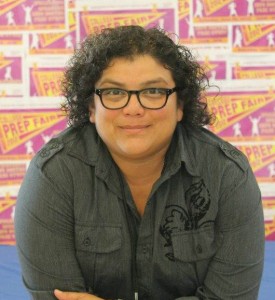
Williams remembers how momentous it felt when she screwed up her courage and crossed the thresholds of Little Frida’s and the Palms, two lesbian-oriented businesses that have since closed their doors.
Although West Hollywood played a role in Williams’ coming out experience, she didn’t consider taking up residence in WeHo. “West Hollywood was always ‘Boystown’,” she said. “I was never really interested in West Hollywood.”
Because it was the party scene that brought Williams to WeHo, all she’d known of the city was its bars and clubs. But when she got a job on the west side, a friend convinced her to look for an apartment in West Hollywood. She found one that she loved, and that brought her to a city that changed her life. That was about 14 years ago, and she’s lived in WeHo ever since.
“The city of West Hollywood wrapped me in its arms,” Williams said.
A famous LGBT enclave, West Hollywood recently got a perfect score on the Human Rights Campaign’s Municipal Equality Index. It’s known to Angelenos as the place where LGBT people from all over Greater Los Angeles gather for community protests and celebrations.
But even a cursory look at population data shows that it’s much more of a gay space than a lesbian one. Gay and bisexual men comprise 41 percent of the city’s population; lesbians and bisexual women account for only five percent.
Among that five percent—a “small but mighty” group, Williams said—are many women working to foster a stronger sense of community among queer women.
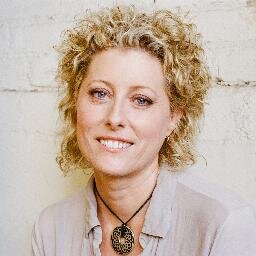
Lauren Costine, an LGBT-affirmative therapist, has a dream of getting more lesbians to come to West Hollywood, of making it more if a truly LGBT place.
“It’s what needs to happen,” said Costine, who is one of the women behind The Lesbian Center (TLC). The new TLC will eventually move into the Werle Buiding, 626 Robertson Blvd., adjacent to West Hollywood Park, where it will be neighbor to the June Mazer Lesbian Archives.
Costine envisions the center, now applying for nonprofit status, as providing a safe space where L.A.-area lesbians of all ages and backgrounds can get together and develop a sense of community outside of the bar scene.
She said that the center, which held a launch party in October is in the midst of “a very exciting growth spurt” and that some fun and educational events are in the works.
Costine moved to West Hollywood about 18 years ago. It was the only part of the L.A. area where she felt safe, she said. And then, she said, “It just became my home.” In addition to WeHo’s LGBT-friendliness, she loves its walkability.
For all the area’s advantages, though, Costine said it’s always been a challenge for her that the area is home to so many more gay men than women.
“There’s such a void in the lesbian community for places to go,” she said.
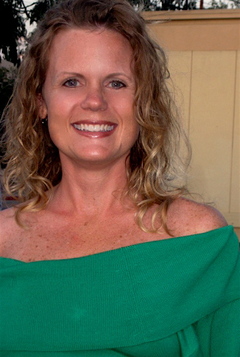
In her single days, Carla Browning frequented coffee houses, where as she looked on as gay men picked each other up with evident ease. She wished it were so easy for women to connect with one another.
There’s nowhere in WeHo that’s geared toward being a social space for women, where they can meet as dates or as friends, she said.
A Virginia native and former minister, Browning came to Los Angeles to play a part in launching a nondenominational church. When she came out of the closet, she left the church.
“I had to recreate myself,” said Browning, who launched the professional consulting business Browning & Associates in 2007. The same year, she left the Miracle Mile for WeHo. Other places felt scary, but in LGBT-friendly West Hollywood she felt she could go after what she wanted. It gave her the courage to come out and be herself, Browning said.
After she left her church, Browning wanted to find something to replace it as an outlet for being of service. She went to City Hall and asked what she could do. In 2008, she joined the Women’s Advisory Board, which advises the City Council on women’s issues and organizes women’s programming. Browning is now the chair of the board.
As it turned out, Ms. Right wasn’t sipping cappuccino across the room; she was part of the softball team where Browning also found a core group of friends.
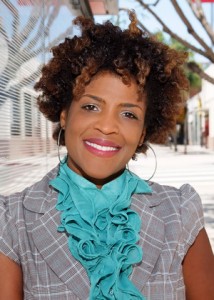
“I really love this city,” said 17-year WeHo resident Marquita Thomas, president of the Los Angeles Gay and Lesbian Chamber of Commerce and a member of the city’s Lesbian Visibility Committee. “This is a city where you know that your voice is heard. It’s grown into a really beautiful space you want to live, work and play in.”
Thomas, who is originally from South Carolina, said she loves WeHo’s mix of restaurants, retail and things to do.
Thomas produced the Serafemme Queer Women of Color Music Festival, which ran for four years. The festival stopped because of the economic downturn, coupled with renovations to West Hollywood Park that made its space unusable. But Thomas has hopes of resurrecting Serafemme within the next couple of years.
There aren’t enough women’s space in WeHo, she said, but that doesn’t meant that it isn’t welcoming for women.
She’d like to see more offerings for women, particularly professional networking events. To create that, she said, it will take more people getting involved—building the community might take a collective of women working together.
It would be great to have more lesbians in the city, Thomas said. But lesbians do come to West Hollywood, she said, and create their own spaces through women’s parties and through club nights such as Girl Bar.
“You’ve got to be so damn organized to be a lesbian now,” Williams joked. Lesbians who want to find events for women must keep track of when Girl Bar is, she said, and seek out events organized by groups such as Women on a Roll.
The city’s many gay bars draw overwhelmingly male crowds, with the controversial moniker “Boystown” sometimes applied to the Santa Monica Boulevard corridor between La Cienega and La Peer.
Why isn’t WeHo home to a real-life version of The Planet, the fictional “L Word” hangout? Lesbians just seem less scene-driven than gay men, Williams said—and she suggested that the importance of the bar scene might be fading for gay men, too, with apps such as Grindr.

Although the bar scene was Williams’ first introduction to WeHo, she discovered that there was much more to the city when it became her home. There’s a real sense of community in WeHo, she said. It’s a warm, friendly place where she’s greeted by familiar faces when she takes her dog on walks.
And WeHo even changed Williams’ approach to life. She used to be angry when things didn’t go her way, she said. She felt resentful rather than seeking solutions. West Hollywood, she said, “turned my anger onto activism.”
That started when a neighbor convinced Williams to come to a Lesbian Visibility Committee meeting. It awoke something within her that she didn’t know existed, Williams said. She became more politically savvy. She joined efforts to fight Prop 8. She’s been involved in WeHo’s annual Women’s Leadership Conference, designed to empower women in business and politics.
“I can take action,” said Williams, who now serves on the city’s Human Services Commission. “I can change things.”
There are changes Williams would like to see in WeHo, such as more affordable housing and dedicated staff for lesbian issues. Relying on volunteer efforts, she said, can lead to a “Sisyphus syndrome” when volunteers must focus on their paid jobs. But overall, Williams said, “I’m very happy living here.”
Once doubtful that WeHo was the place for her, Williams has forgone opportunities to move to other cities, including prominent LGBT enclave San Francisco.
“It turned out to be the best thing ever,” she said of her reluctant move to WeHo.

It would be nice if WeHo did have more lesbian gathering spots other than the big club nights like Truckstop (is that still a thing?) and Girl Bar. I love my gay women, lesbians, girls who like girls, whatever you want to call them and think they are necessary to make WeHo a real place of equality and diversity. When I have lesbian friends and family in town it is hard to find casual places for us to go where they can mingle with other gay women. We end up at gay bars that are 99% male.
I love WeHo Lesbians!!
I use GLBT always. I don’t remember when it was changed, but I like it it the way I learned it.
Here all these years I have thought that “lesbians” were “gay women”. EVERY lesbian I know describes herself as a gay woman. WHY must it be “them” and “us”? We started as “Gays”. Then somewhere along the road it was changed to GLBT. That still is the name of the original Gay Lesbian Bi Transgender Organizations. Somewhere along the way a Lesbian changed it to LGBT. WE are often our own worst enemy. Why can’t we be ONE, standing shoulder to shoulder? Over the years most Lesbians have NOT lived in typical “Gay Ghettos such as the Montrose in Houston,… Read more »
It is a shame that we’re lacking a lesbian bar now. Visitors often ask me where women can go to socialize on a Saturday night and I just don’t have an answer for them.
Knowing leaders like Anne Marie Williams, makes me certain that Weho will , in the future be of more interest to the lesbian population. Many younger lesbians have told me that they have felt left out ostracized, and not respected by the “old guard” , almost like a poison ivy of sorts. They haven’t felt an inclusive mentorship, but rather a dictatorship of a few who remain stuck in the 70’s. , When I watch lesbians like Anne Marie, changing the world through her civic and worldwide activism, it makes me know the future of West Hollywood, is in good… Read more »